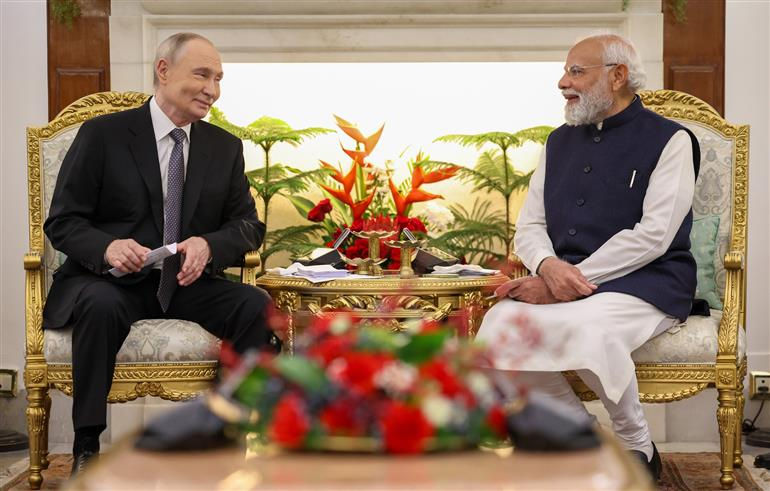Jointness, Integration, Theaterisation Still on the Drawing Board
- Security Risks Research
- Oct 12, 2023
- 4 min read

Even as India’s military commanders harp on a latent and potent threat from China, capability integration through organisational reforms within the armed forces appears to be in a log jam of sorts, with the most important proposal– Theaterisation continuing to be in a limbo.
Two Chief of Defence Staff – Late General Bipin Rawat and the current CDS General Anil Chauhan had laid down the same as a priority area.
Yet in the fourth year of the creation of the appointment of the CDS, theaterisation remains on the drawing board.
Two Tracks to Theaterisation
Indeed, such far sweeping reforms can be undertaken in two ways.
Firstly, and the most direct way is for the Government issues an executive order enforcing the reforms. This is the way the United States and China did it. The United States Goldwater-Nichols Department of Defense Reorganization Act reorganized the command hierarchy of the armed forces mandating jointness and its addendums in 1986. The US is no doubt field a joint force in every which way. The process however had evolved over the years after much debate in the US.
Chinese President and Chairman of the Central Military Commission (CMC) ordered creation of theatre commands in 2013. It is not clear if there was sufficient debate in the CMC or the People’s Liberation Army (PLA) before Xi issued the orders. Ten years later the theatre commands are firmed in yet it remains a work in progress.
India’s Pathway to Theaterisation
India has selected the route of building consensus. To empower the Joint Chiefs when appointed the Inter- Services Organisations (ISOs) bill seeks provides Commander-in-Chief (C-in-C) and Officer-in Command (Oi/C) of ISOs with all disciplinary and administrative powers. This has been passed by the parliament during the Monsoon Session (2023).
The bill also empowers the government to create additional organisations as required thus giving the mandate to creation of theatre commands.
Now the process of consensus building is apparently underway. Chief of Defence Staff General Anil Chauhan in a recent defence event held on October 10 said that Indian armed forces had commenced the journey of "jointness, integration and theaterisation."
The CDS said he has managed to "forge a consensus" among the Army, Navy and IAF, while eliminating "some mistrust", since he took over as CDS a year ago. "It's a journey we have started and will hopefully complete," he said.
Meanwhile Ajay Banerjee of the Tribune reports that Department of Military Affairs (DMA) headed by the CDS is reconsidering the proposals for creation of theatre commands.
There is an attempt to rework the initial proposal of three theatre commands Western, Eastern and Maritime commands.
“The previous formula of three theatre commands is not final. A new combination is under examination,” an official was quoted by the Tribune. It is not clear what proposal has been send to the government.
The proposal of three theatre commands envisaged these under operational command of the Chief of the Defence Staff with the service chiefs role restricted to fielding of the force that is creation of capabilities to be fielded by the theatres. This is the way the US armed forces are structured with the Theatre Commanders in their case reporting to the Secretary of Defence [The Defence Minister].
In the Indian hierarchy this was not seen workable. The situation is complex with a number of factors entailed. For one it is the Defence Secretary – who heads the Department of Defence who is specifically responsible for the defence of India. A reformulation of this will involve another long bureaucratic struggle.
Defence Minister in the case of India have limited exposure to military command functions unlike the United States which has regularly appointed former service officers as the Defence Secretary the present one – Lloyd Austin having been commander of the Central Command.
Operational Command Conundrum
Now as per the Tribune, “It is logical to have three-star officers at the helm of theatre commands, else what will be the service chief’s role,” quoting an official, adding that the US concept of the chief just looking after recruitment, training and sustaining the forces might not work in India.
Thus, the Tribune says that services chiefs are likely to retain their operational control of the forces even as the notification in December 2019 that created the post of CDS bars him from having any operational command over the military.
How will this work with joint theatres remains to be seen for this may create some anomalies in terms of accounting and accountability particularly in terms of operations.
Logically after theatre commands come up 17 regional commands of the three services should be subsumed in these but there appears to be a standoff on the issue as this will lead to substantial down grading of the C in Cs of the services down to three or four including the Northern Command.
What’s On Now and What to Expect?
Now the CDS is preparing a report which would be submitted to the Defence Minister Rajnath for political consideration.
While there are several models which had been debated and discussed by the Indian strategic community over the past two decades or so on the structure of theatre commands and operational chain of command ensuing thereof. Every time it is evident that there is an attempt to reinvent the wheel, which is leading to delays. More over resistance from the services is apparent.
It is time that the Cabinet Committed on Security headed by the Prime Minister with the Defence, Finance and Foreign Ministers takes a considered view of the proposals put forth by the CDS and issues an executive order with reviews as the organisations take shape rather than delaying this important transformation.



Comments